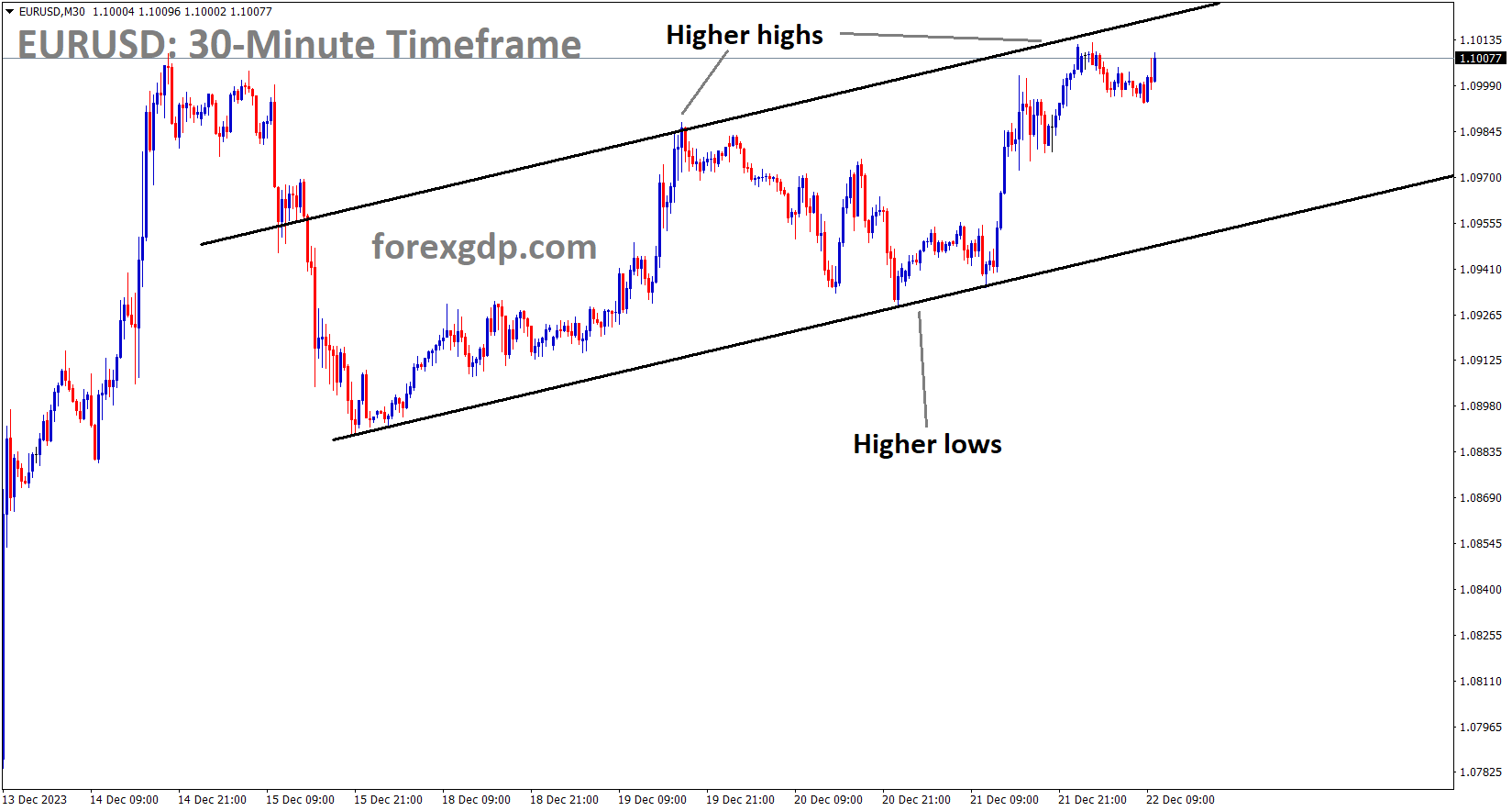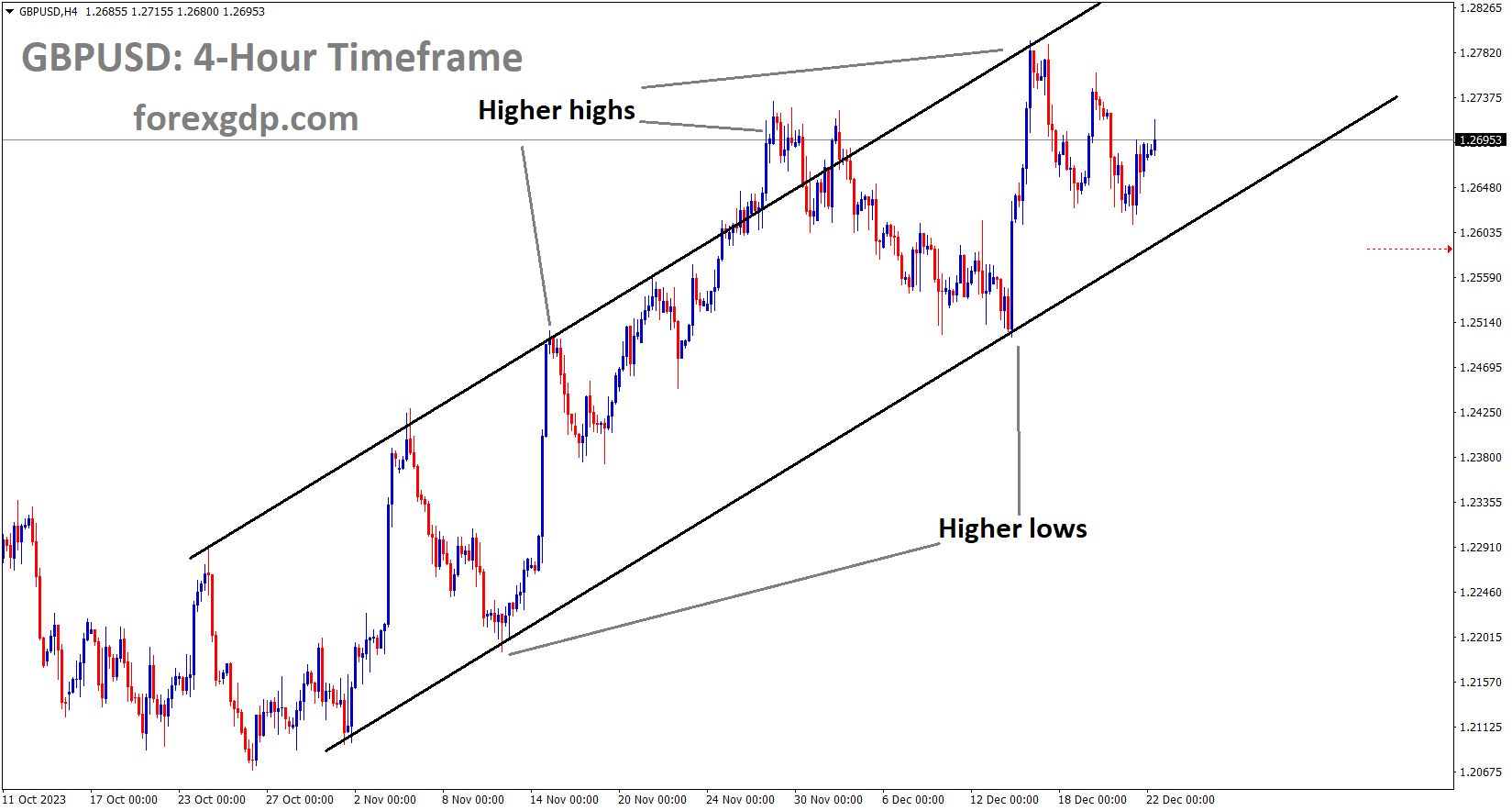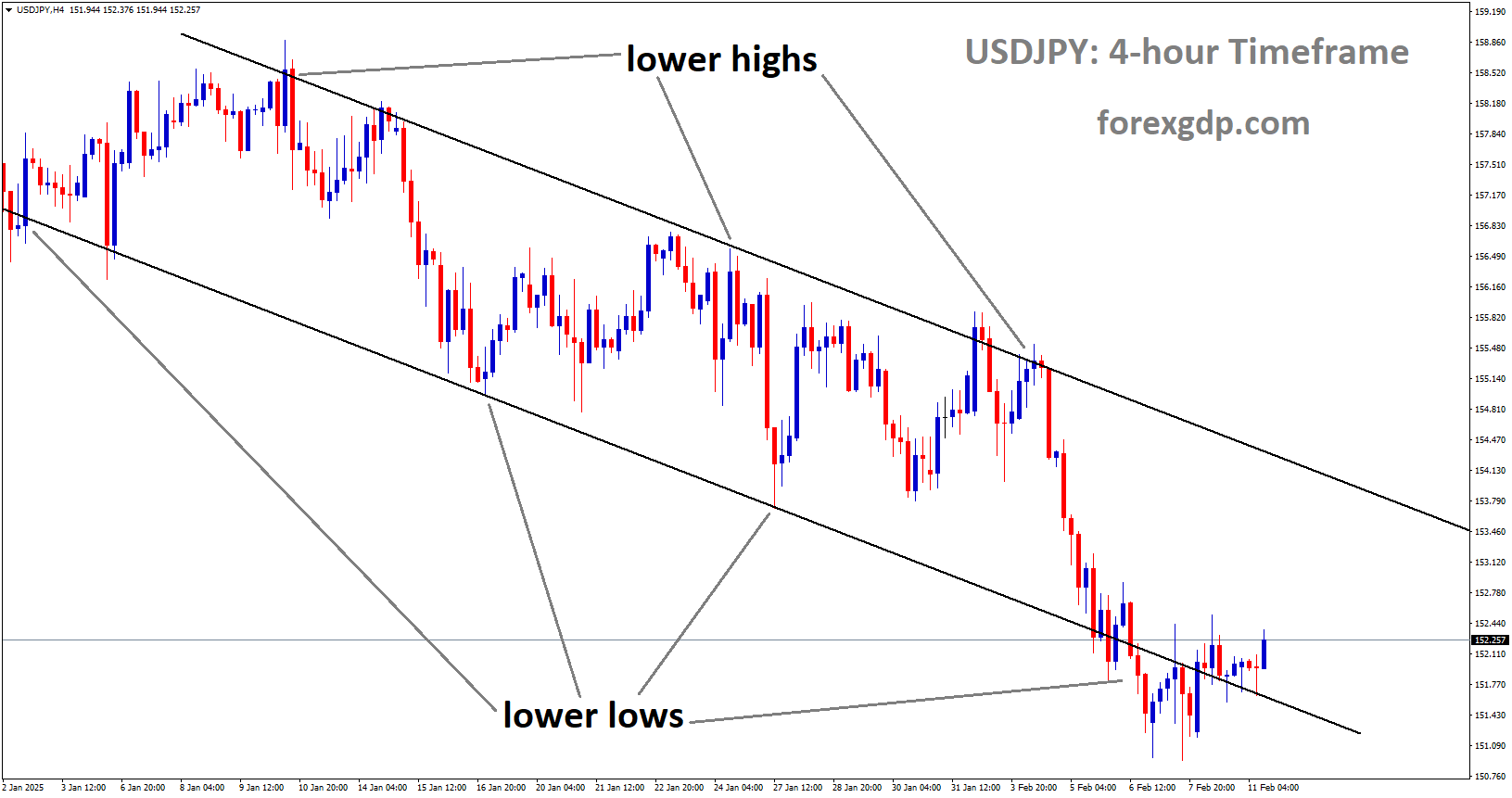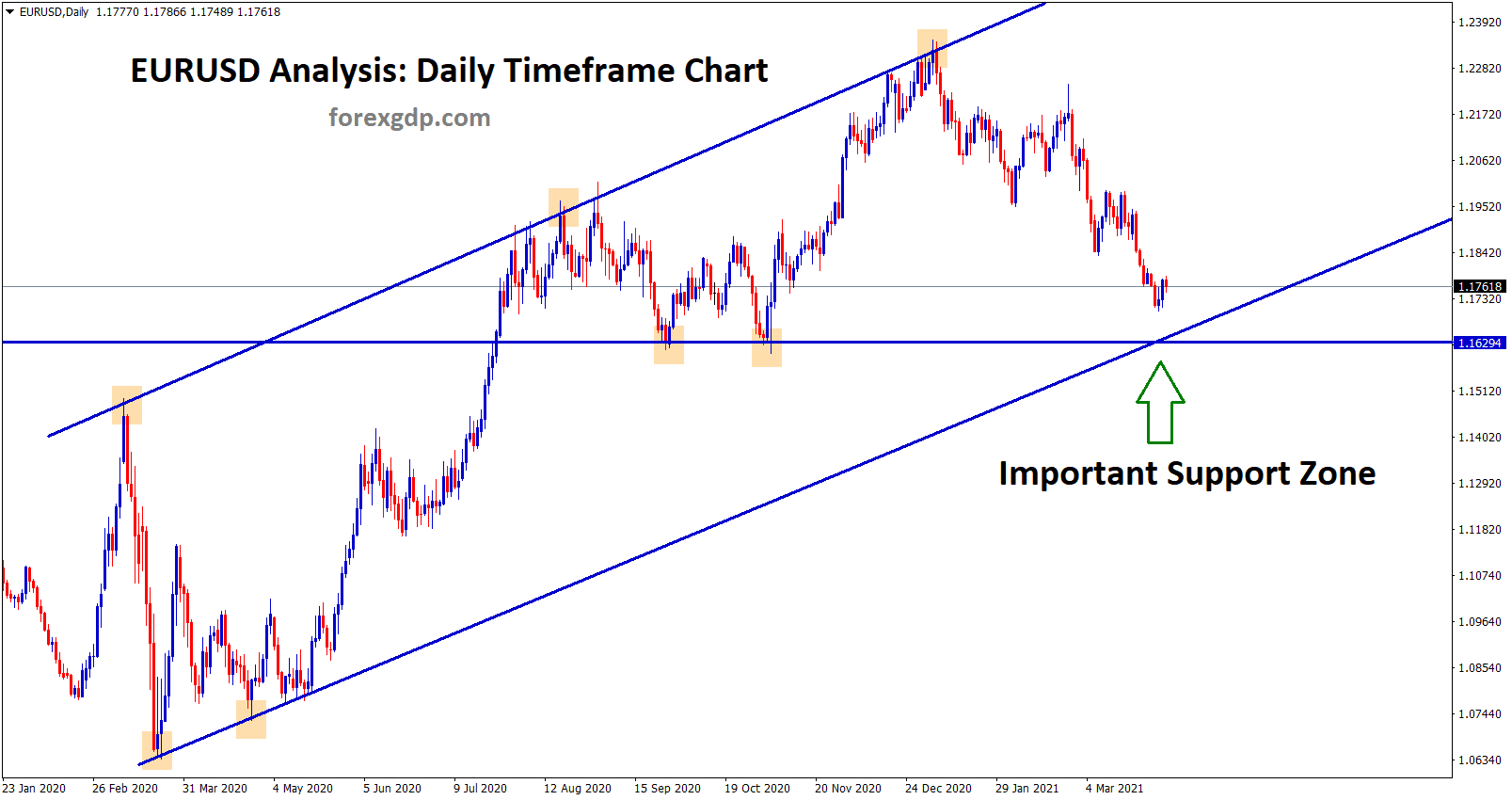EURUSD Analysis:
EURUSD is moving in an Ascending channel and the market has reached the higher high area of the channel
Luis de Guindos, the Vice President of the ECB, stated that the Eurozone is not currently in a technical recession, and the EU is actively implementing further reforms to address market uncertainty. Additionally, ECB Governing Council member Martins Kazaks mentioned the possibility of rate cuts by the ECB starting from mid-2024.
The EURUSD pair is experiencing an upswing due to the weakening US Dollar and the more hawkish stance adopted by the European Central Bank. Investors are eagerly awaiting the release of November’s US Core Personal Consumption Expenditure Price Index on Friday, with expectations of a 0.2% month-on-month increase and a 3.3% year-on-year rise. The major currency pair is currently trading around 1.1008, marking a 0.05% gain for the day.

In a recent statement, ECB Vice President Luis de Guindos stated that it is premature to consider easing monetary policy. He also reassured that the central bank does not anticipate a technical recession in the Eurozone and expressed support for an agreement on EU fiscal reform to alleviate market uncertainty. Furthermore, ECB Governing Council member Martins Kazaks mentioned that interest rates should remain unchanged for some time, potentially delaying the first rate cut, which investors had been pricing in around mid-2024.
EURCHF Analysis:
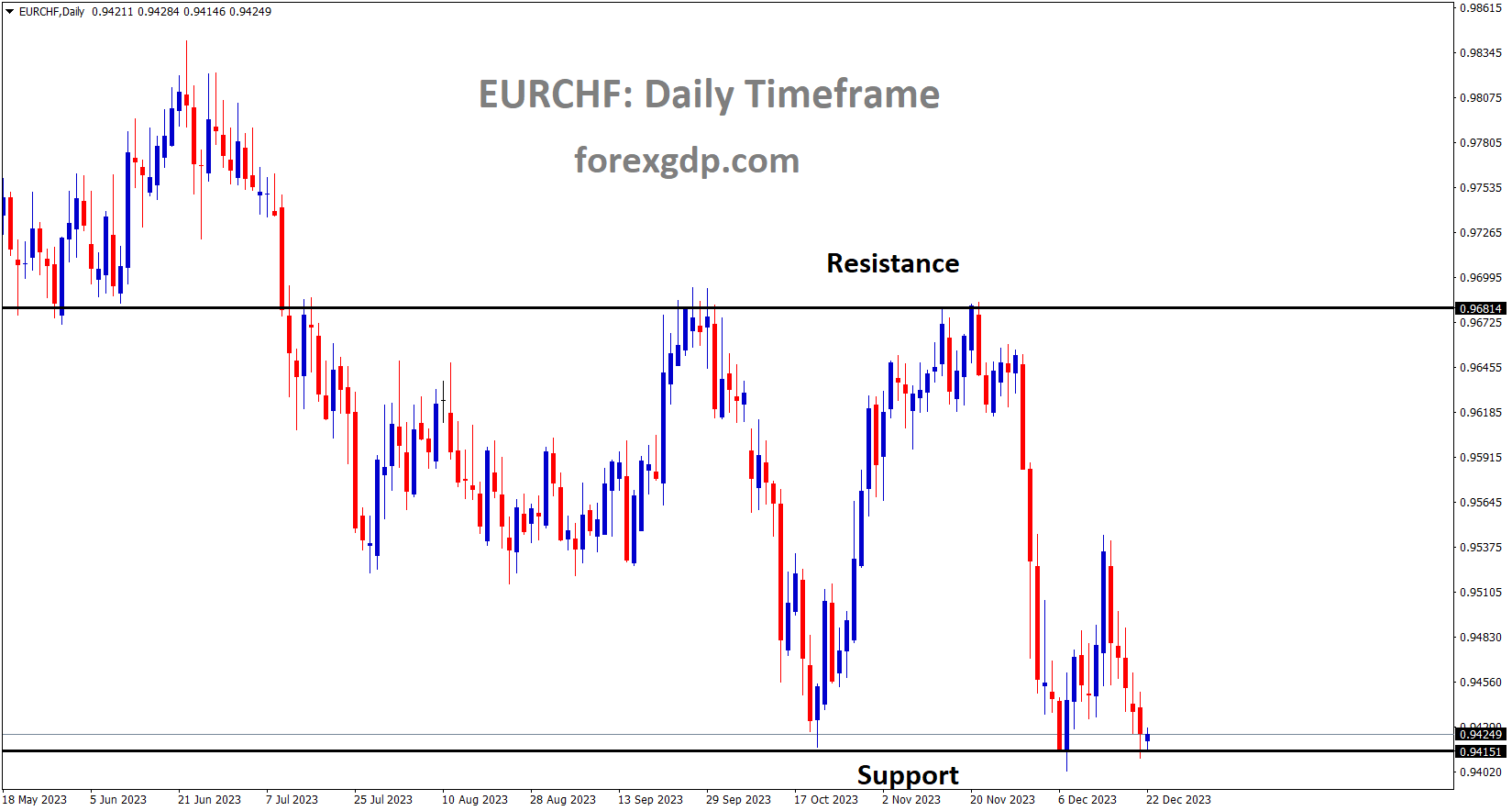
EURCHF is moving in the Box pattern and the market has reached the support area of the pattern
On the other side of the Atlantic, the Federal Reserve has adopted a more dovish stance, with expectations of possible rate cuts totaling 75 basis points in the latter half of 2024. Regarding economic data, the US Bureau of Economic Analysis disclosed that the US Gross Domestic Product for the third quarter expanded by 4.9%, falling short of the market’s 5.2% estimate. This underwhelming US data, coupled with expectations of three rate cuts by the Fed, has placed downward pressure on the US Dollar and provided tailwinds for the EURUSD pair.
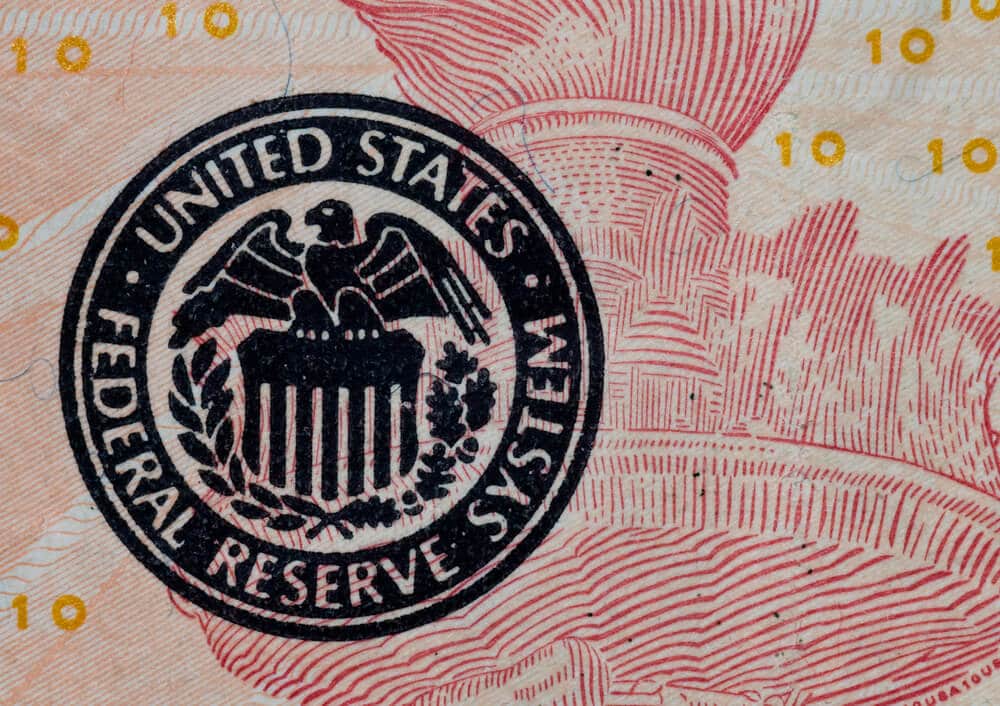
Looking ahead, market participants will be keeping a close eye on economic indicators such as the German Import Price Index and Consumer Confidence data from France and Italy. Additionally, the US Core PCE data set to be released on Friday is expected to generate market volatility ahead of the holiday season. Traders will closely analyze this data for trading opportunities within the EURUSD pair.
GOLD Analysis:
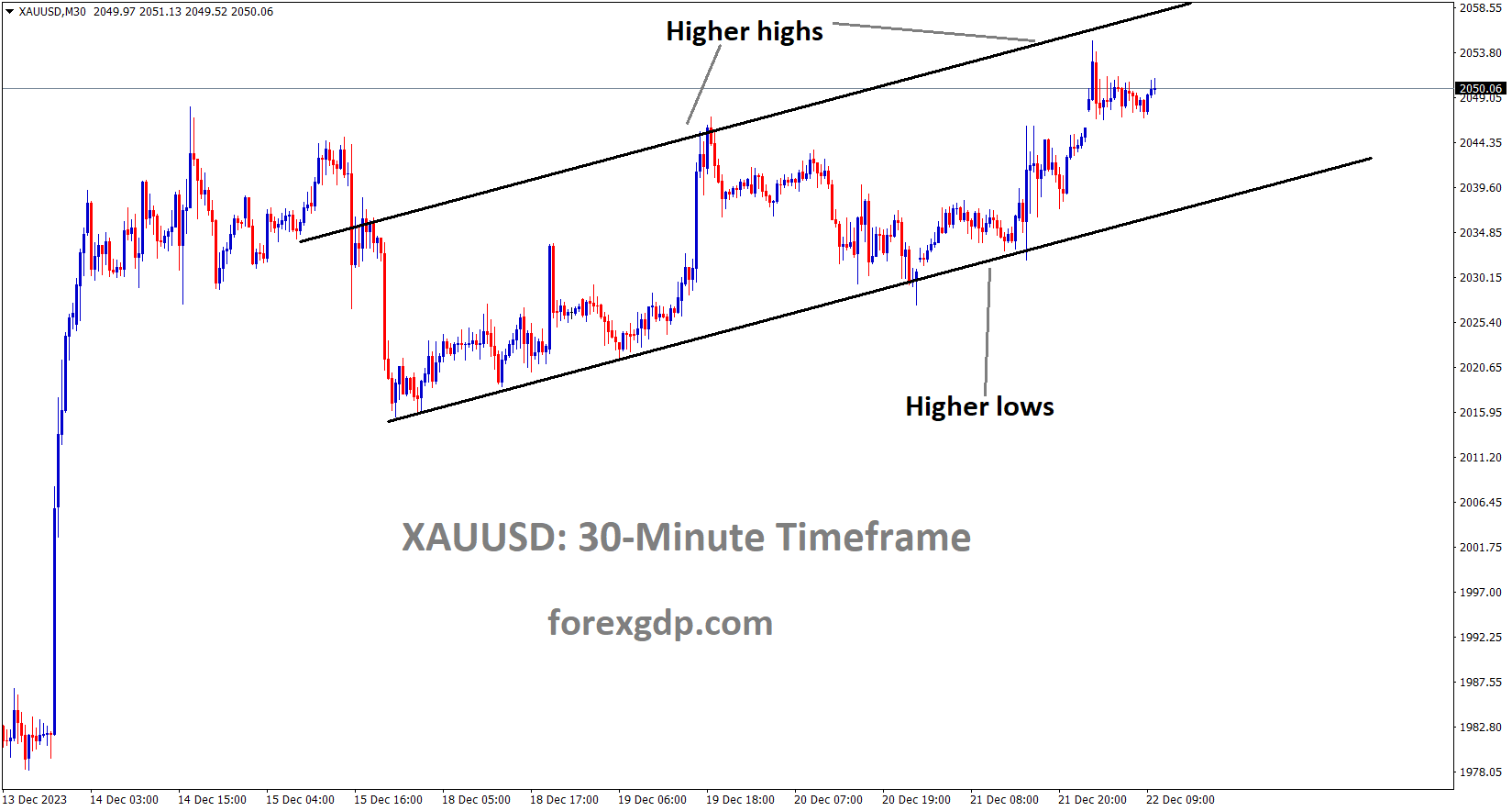
XAUUSD Gold price is moving in an Ascending channel and the market has reached the higher high area of the channel
Gold prices have risen as a response to the underperformance of US domestic data and the Federal Reserve’s outlook of potential rate cuts in 2024. While US Initial Jobless claims came in at 205,000, which was below the expected 215,000, it’s important to note that these claims are still at historically low levels.
The price of gold, represented as XAUUSD, initially gained ground, reaching a near three-week high and hovering just below the $2,050 level during the early European session on Friday. However, it remained nearly unchanged for the day. This cautious trading behaviour can be attributed to traders lightening their bearish bets on the US Dollar as they anticipate the release of key US inflation figures, which are seen as a potential headwind for the precious metal. Despite this, meaningful downside movement for gold remains elusive due to widespread expectations that the Federal Reserve will initiate interest rate cuts as early as March 2024.
These market expectations were further reinforced by a downward revision of the US Q3 GDP data, which capped a modest recovery in the US Dollar from its near five-month low reached on Thursday. Given the prospects of a global trend towards interest rate cuts, the path of least resistance for gold, which doesn’t yield interest, appears to be on the upside. However, investors are exercising caution and waiting for the release of the US Core Personal Consumption Expenditure Price Index, as it will play a crucial role in shaping the Fed’s future policy decisions and provide fresh direction to XAUUSD.

The expectation of an imminent shift in the Federal Reserve’s policy stance has propelled the price of gold to its highest level since December 4 by the end of the week. Despite efforts by several Fed officials to push back against the idea of rapid interest rate cuts in the coming year, investor sentiment has remained unchanged. The CME Group’s FED Watch Tool indicates a higher likelihood of a Fed rate cut by March 2024, along with expectations of a cumulative cut of 150 basis points by year-end. These expectations were corroborated by economic data revealing that the US economy expanded at an annualized pace of 4.9% in the third quarter, slightly below the previously reported 5.2% growth rate. Additionally, the Labor Department reported that Initial Jobless Claims increased to 205,000 for the week ending December 16, although they still remained at historically low levels. Meanwhile, the yield on the benchmark 10-year US Treasury bond remains near its lowest level since July, while the US Dollar has shown some signs of recovery from its recent five-month low. Despite this, the prospect of a global trend towards interest rate cuts continues to support the non-yielding gold market and favor bullish traders.
Furthermore, a significant drop in UK inflation in November, reaching its lowest rate in over two years, has raised expectations that the Bank of England may consider rate cuts in the first half of 2024. Additionally, a series of softer inflation data points from the Eurozone indicate the possibility of earlier rate cuts by the European Central Bank. Therefore, the upcoming release of the US Core Personal Consumption Expenditure Price Index is expected to offer insights into the Fed’s policy outlook and provide fresh momentum for XAUUSD.
SILVER Analysis:
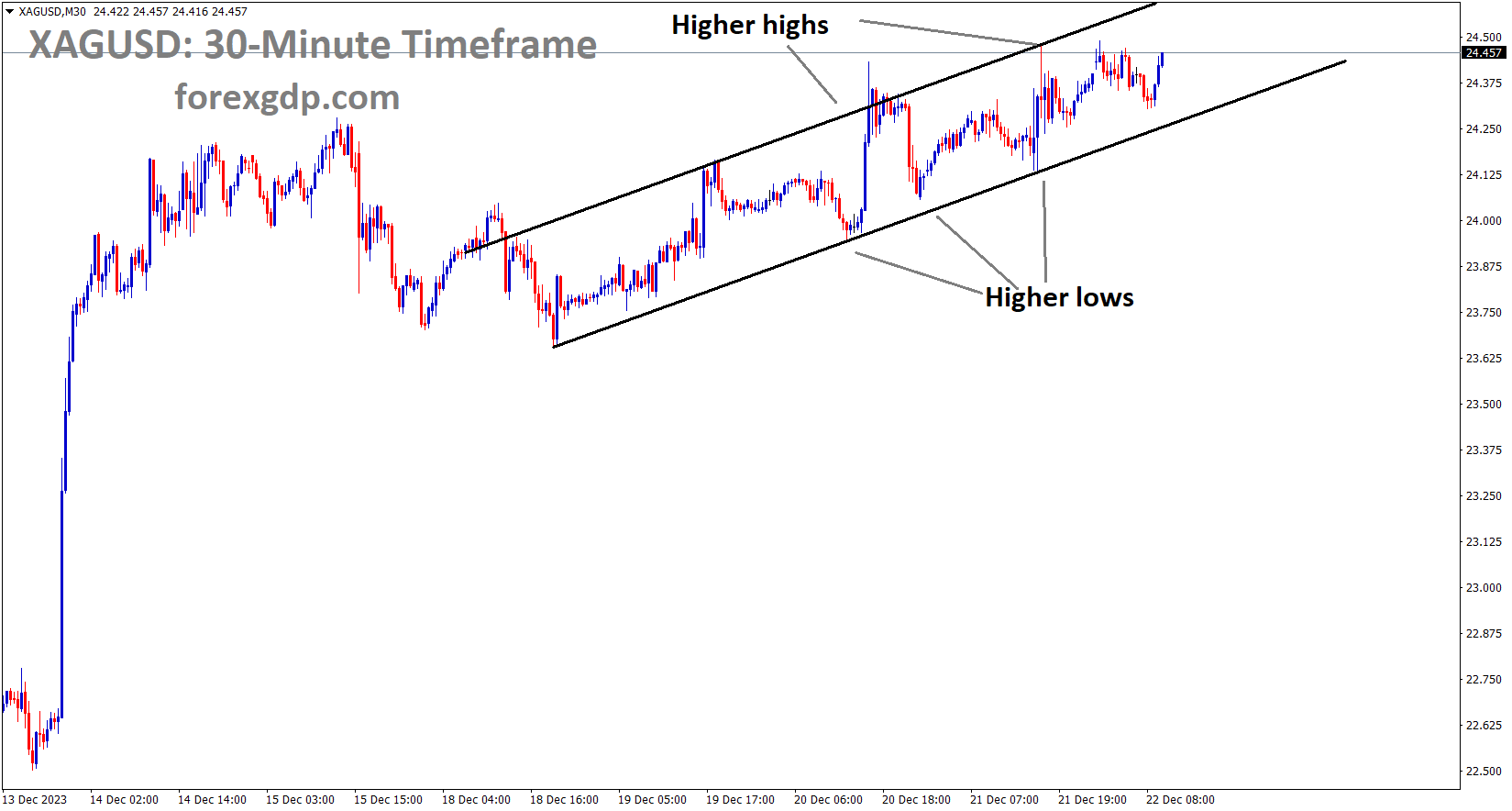
XAGUSD Silver price is moving in an Ascending channel and the market has reached the higher high area of the channel
The third-quarter GDP data for the United States fell short of expectations, reporting a growth rate of 4.9% instead of the anticipated 5.2%, compared to the previous quarter’s 2.1% growth. As a result, the US Dollar experienced a decline in value following the release of this data. The third-quarter GDP growth rate for the United States has been revised down to 4.9%, slightly below the 5.2% reported in the second estimate but matching the 4.9% initially reported in the advance estimate. This revision is based on more comprehensive source data than what was available for the second estimate issued last month. The primary reason for the downgrade is a reduction in consumer spending, and there have also been downward revisions to imports, which negatively affect GDP calculations. However, it’s important to note that the increase in real GDP is still attributed to growth in various sectors, including consumer spending, private inventory investment, exports, imports, state and local government spending, federal government spending, residential fixed investment, and nonresidential fixed investment.

Compared to the second quarter, the acceleration in real GDP in the third quarter is primarily due to increased exports and faster growth in consumer spending and private inventory investment, although this was partly offset by a slowdown in nonresidential fixed investment. Imports also saw an increase. In terms of personal income, current-dollar personal income increased by $196.2 billion in the third quarter, which is a downward revision of $22.1 billion from the previous estimate. This increase is mainly driven by higher compensation, particularly from private wages and salaries, as the US labor market remains resilient. It’s worth noting that there has been a decline in disposable income in the fourth quarter, which is a concerning trend. However, the robust labor market and wage growth are currently supporting consumer spending and disposable income. Recent data indicates that the US economy is showing signs of a slowdown, and today’s data release further reinforces this narrative. Expectations for Fed rate cuts are likely to be adjusted in a dovish direction, and if US Core PCE data disappoints tomorrow, it could put pressure on the US Dollar as we head into 2024. While this repricing may occur with each new data release, the signs of a slowdown are becoming more pronounced. This may also revive concerns about a potential recession, although initial jobless claims continue to outperform estimates. The Fed seems to be making progress in addressing inflation, but external threats remain that could hinder their efforts to bring inflation below 2%.
USDCHF Analysis:
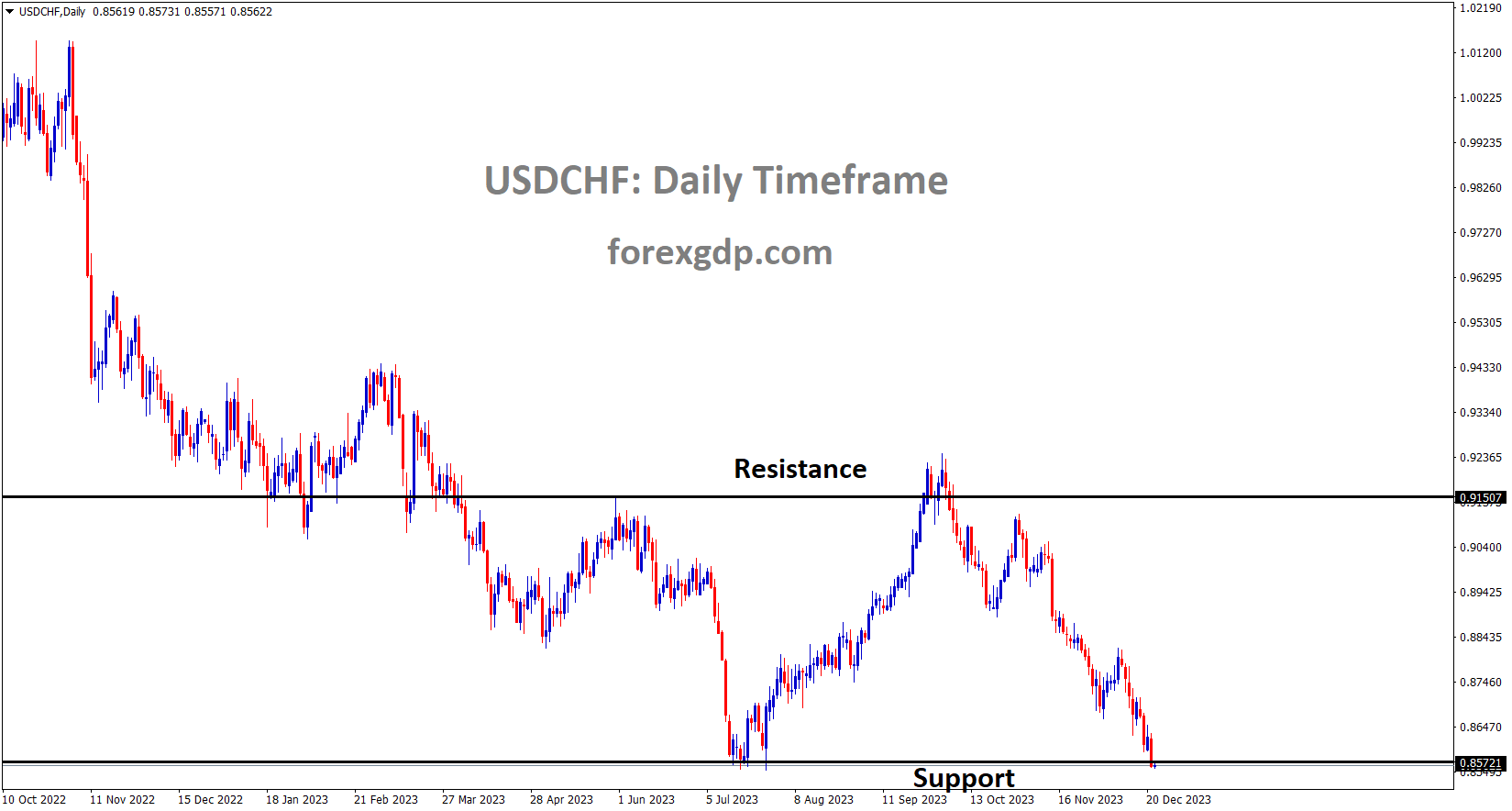
USDCHF is moving in the Box pattern and the market has reached the support area of the pattern
The UK and Switzerland have officially approved the Berne Financial Services agreement, establishing a financial services deal. This agreement is aimed at facilitating and streamlining financial services between the two nations.
The UK’s “third-country” status had the potential to create obstacles for financial firms engaging with one of the world’s largest wealth centers. However, in a bid to maintain its position after Brexit introduced barriers to cross-border business, the UK has entered into a financial services agreement with Switzerland.
Chancellor Jeremy Hunt officially signed the Berne Financial Services Agreement on December 21st. This agreement establishes a form of equivalence between the regulatory frameworks of both nations. As a result, asset managers, bankers, and financial advisors will be able to conduct business between the two countries without the need to obtain specific permissions in each jurisdiction.
GBPUSD Analysis:
GBPUSD is moving in an Ascending channel and the market has rebounded from the higher low area of the channel
The third-quarter GDP data for the UK fell short of expectations, reporting a growth rate of 0.30% compared to the forecasted 0.60% and the previous quarter’s performance. However, UK retail sales showed a positive trend, increasing by 1.3% in November, a significant improvement from the -0.30% decline observed in October.
The UK’s Office for National Statistics released data on Friday indicating that retail sales in the UK experienced a 1.3% monthly increase in November. This figure represents a notable improvement from the no-change reported in October and surpasses market expectations, which had anticipated a 0.4% increase. On an annual basis, retail sales saw a modest 0.1% uptick.

Additionally, the Office for National Statistics revised down the annualized Gross Domestic Product growth for the third quarter from 0.6% in the initial estimate to 0.3%. Lastly, Total Business Investment showed a quarterly decline of 3.2% in the third quarter, which marks an improvement compared to the 4.2% contraction reported in the initial estimate.
GBPCAD Analysis:
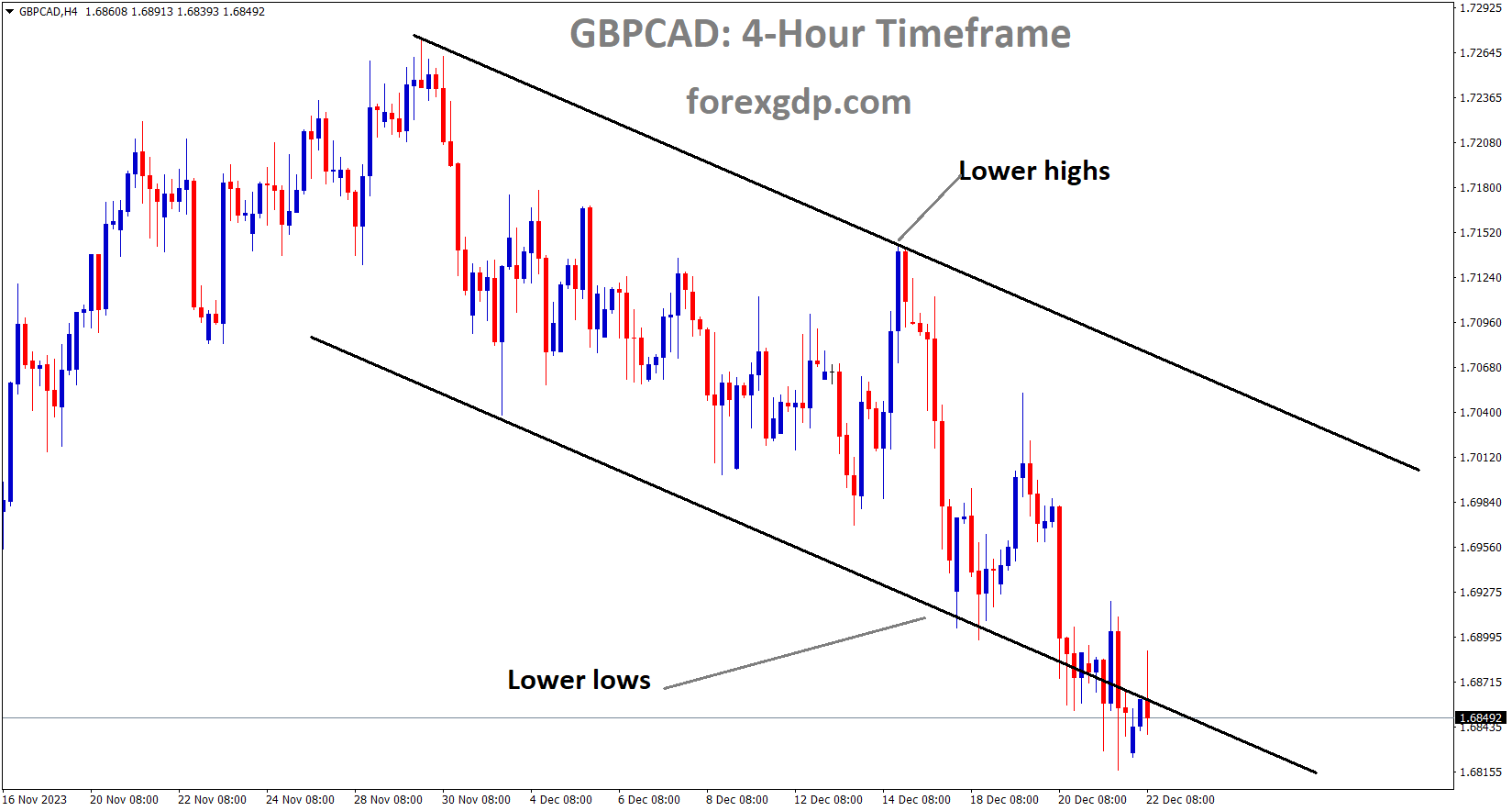
GBPCAD is moving in the Descending channel and the market has reached the lower low area of the channel
In October, Canadian retail sales increased to 0.70%, surpassing the previous reading of 0.50%. The Canadian Dollar continues to exhibit strength against other currency pairs, maintaining a positive trend.
On Thursday, Canada’s Retail Sales may have offered limited support to the Canadian Dollar. The Retail Sales for October slipped to 0.7%, compared to September’s 0.5%. However, Retail Sales excluding motor vehicles and vehicle parts increased to 0.6%, up from the previous 0.1%.
The price of West Texas Intermediate is trading higher at around $74.40 per barrel as of now, marking its second consecutive day of gains. The recent rise in crude oil prices can be attributed to ongoing tensions in the Middle East, particularly due to Houthi attacks on ships in the Red Sea. More shipping companies, such as Germany’s Hapag-Lloyd and Hong Kong’s OOCL, are opting to avoid the Suez Canal waterways.

Additionally, the geopolitical landscape sees Angola deciding to withdraw from the Organization of the Petroleum Exporting Countries and its allies. Angola’s oil minister stated that the country’s interests were not being served within the group. Market participants will be closely watching Canada’s Gross Domestic Product data for October, which is expected to show improvement. On the US economic calendar, attention will be on the Core Personal Consumption Expenditures – Price Index data and the Michigan Consumer Sentiment Index on Friday.
CADJPY Analysis:
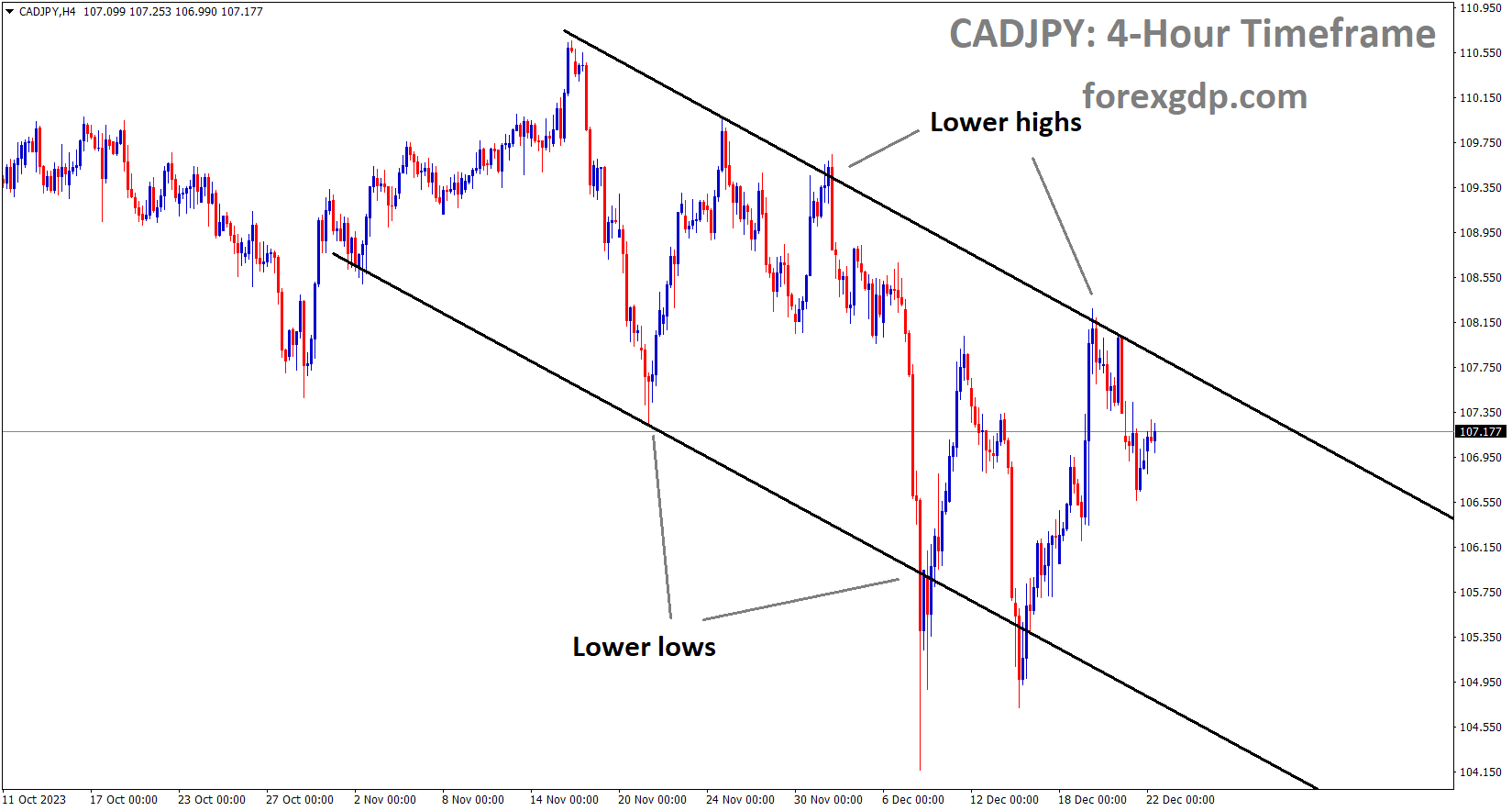
CADJPY is moving in the Descending channel and the market has fallen from the lower high area of the channel
In November, Japan’s Consumer Price Index (CPI) data showed a decrease to 2.8% from the previous month’s 3.3% in October. The Bank of Japan’s preferred inflation reading is approaching the 2% target level.
And The outcome of the Bank of Japan meeting minutes reveals that the YCC policy settings will be maintained for the foreseeable future. The bank emphasizes that adjustments to monetary policy settings will only occur once wage and inflation levels align with our target.
According to the most recent data published by the Japan Statistics Bureau on Friday, Japan’s National Consumer Price Index for November registered a year-on-year figure of 2.8%, down from the 3.3% reported in October. Additionally, when excluding fresh food from the calculation, the National CPI for November, known as the National CPI ex Fresh Food, stood at 2.5% YoY, compared to the previous figure of 2.9%.

In the BoJ Minutes of the October meeting, the Bank of Japan’s Board members expressed their perspectives on monetary policy outlook and the concept of Yield Curve Control (YCC). The consensus among members was the need to maintain the current accommodative policy stance with patience. Several members emphasized the importance of sustaining YCC as a means to continue supporting wage growth. Additionally, one member highlighted the necessity of confirming the relationship between wages and inflation in determining whether the sustained achievement of the price goal can be realistically pursued. Furthermore, one member pointed out that the probability of Japan achieving sustained 2% inflation is increasing, which implies that the Bank of Japan should gradually adjust the extent of monetary easing. Several members also noted that Japan’s price developments might act as a factor pushing up long-term interest rates.
Regarding the 10-year Japanese Government Bond (JGB) yield, one member suggested that it could potentially reach 1%, depending on developments in the US Treasury market and domestic price trends. However, many members expressed concerns about the potential adverse effects on markets and corporate funding if the BOJ maintains tight control over the JGB yield. Several members advocated for greater flexibility in YCC, believing that this would help reduce speculative activities in the market and enhance the sustainability of the YCC framework.
AUDUSD Analysis:
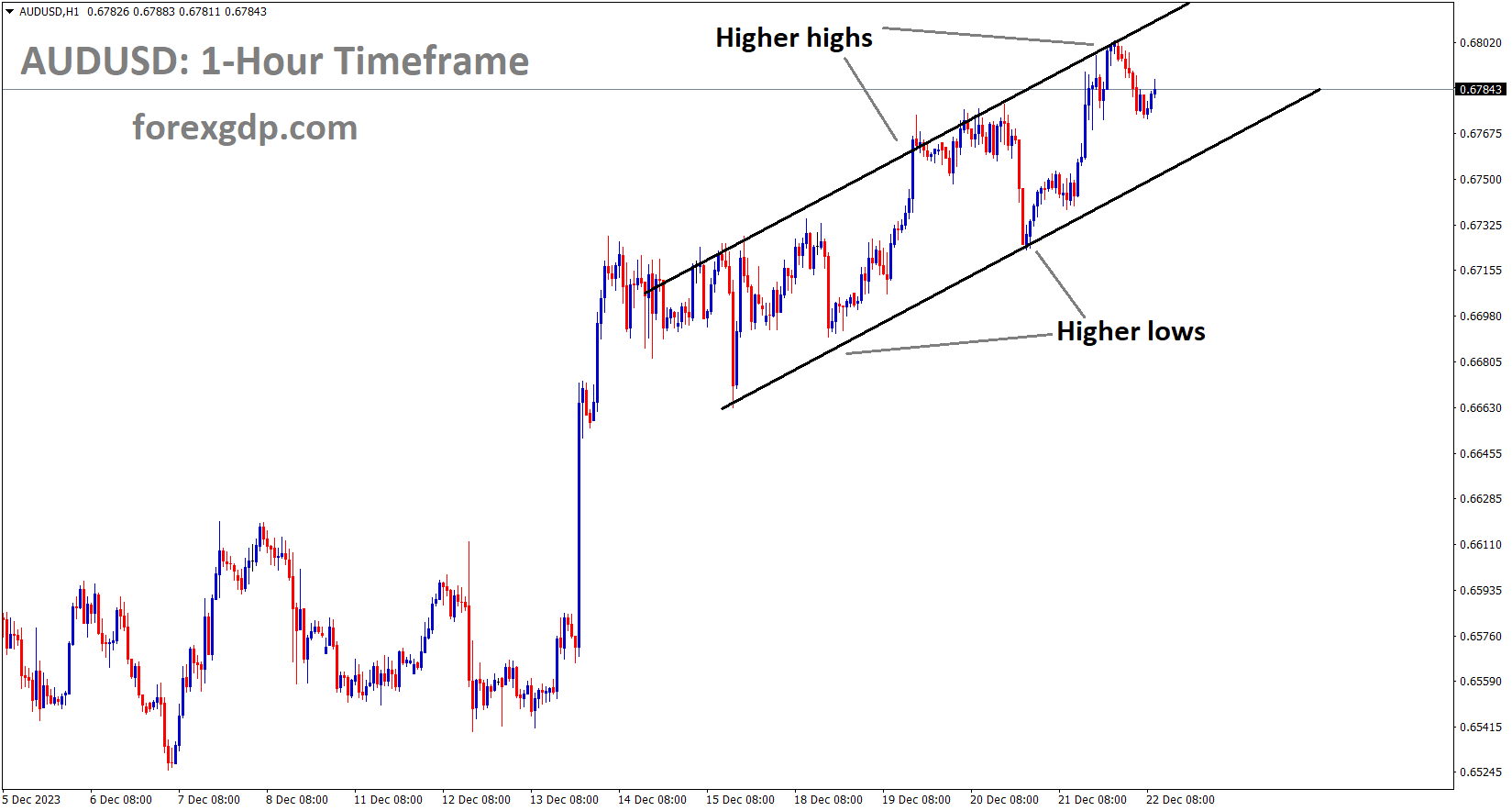
AUDUSD is moving in an Ascending channel and the market has fallen from the higher high area of the channel
The Australian Dollar is gaining strength against the US Dollar, driven by negative numbers in US domestic data and anticipation surrounding the upcoming release of the Core PCE index data today. The Reserve Bank of Australia (RBA) is showing a willingness to consider a rate hike, which is supported by incoming inflation data, contributing to the positive sentiment for the Australian Dollar in the market.
The Australian Dollar had a strong upward surge against the US Dollar during Thursday’s trading session. This rally was spurred by the revision of the Q3 Gross Domestic Product figures, which had a softening effect on the US Dollar. Additionally, other medium-tier economic reports, including Jobless Claims and Philly’s Federal Reserve Manufacturing Survey, contributed to the Australian Dollar’s gains. Specifically, the final estimate released by the US Bureau of Economic Analysis indicated a 4.9% annual increase in US real GDP for Q3. This figure fell short of the market’s expected projection of 5.2%. Furthermore, data showed that in December, the Philly Fed Manufacturing sector survey experienced a significant decline, dropping to -10.5. Additionally, the US Department of Labor’s initial Jobless Claims report for the week ending December 16 revealed an increase in claims to 215,000, compared to the previous week’s 202,000. Despite the increase, this number was lower than the expected 215,000.

In a broader context, the US Dollar is facing downward pressure due to growing speculation about Federal Reserve easing. These heightened expectations are in response to the fallout from the recent dovish stance adopted by the Fed during its last meeting in 2023, which weakened the US Dollar. This occurred despite the Fed officials’ recent efforts at damage control in subsequent sessions. Moreover, incoming data that supports the dovish stance and makes a case for earlier rate cuts may lead to further upside for the AUDUSD currency pair. Looking ahead to Friday, investors will closely monitor November’s Personal Consumption Expenditures data from the US. This metric is closely watched by the Federal Reserve to assess inflation trends. Meanwhile, US bond yields experienced multi-month lows earlier in the session but appear to be recovering. The 2-year rate currently stands at 4.34%, while the 5 and 10-year yields are both at 3.86%, making the US Dollar less attractive to investors.
NZDUSD Analysis:
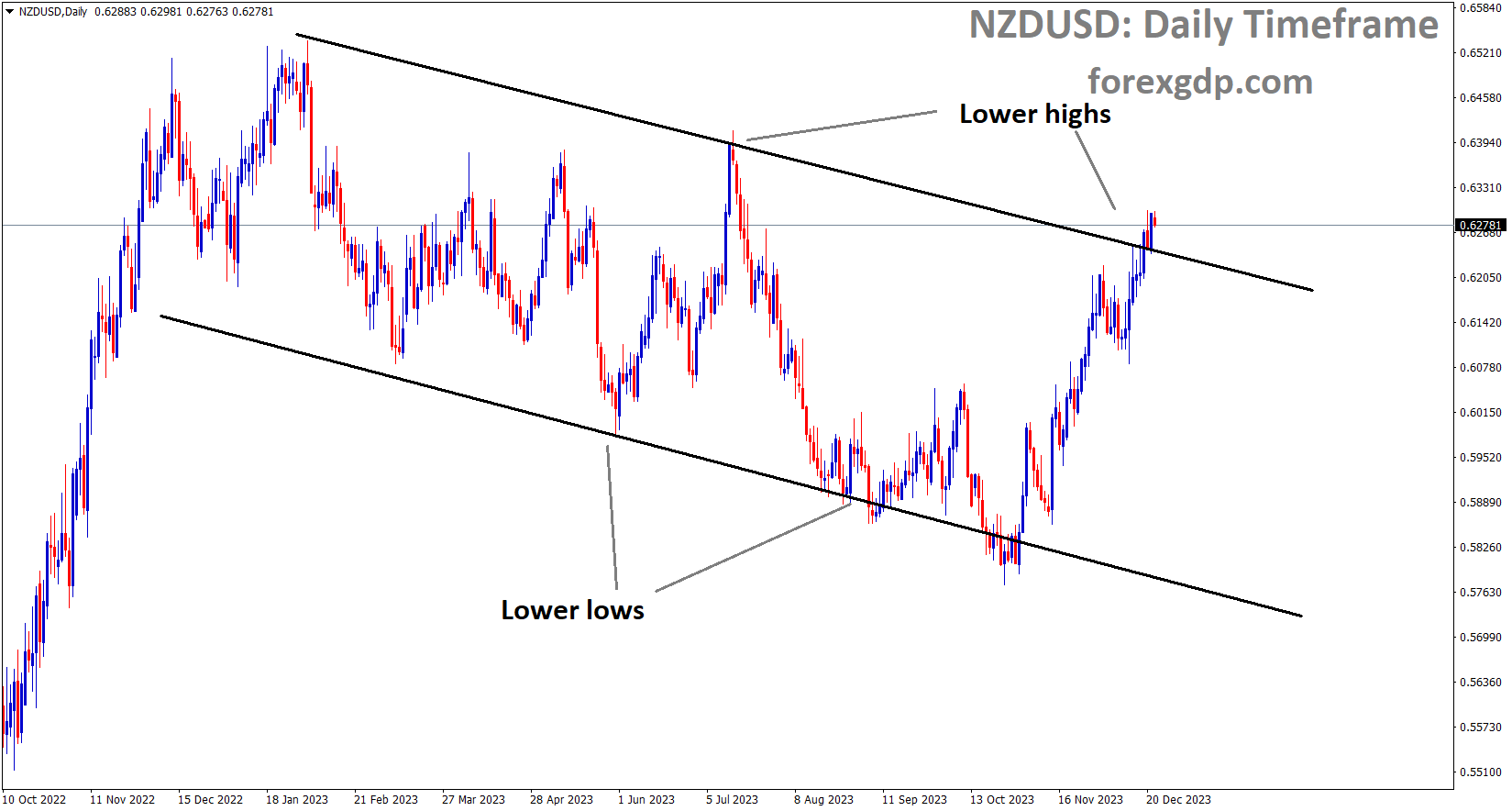
NZDUSD is moving in the Descending channel and the market has reached the lower high area of the channel
In November, New Zealand’s credit card spending increased to 3.3%, marking a rise from the 2.8% observed in October. The New Zealand Dollar remains resilient against other currency pairs, particularly following the recent downturn in US domestic data.
The New Zealand data had little impact on the markets, as the majority of investors were laser-focused on the US inflation figures. In the United States, Initial Jobless Claims increased by an additional 205,000 claimants for the week ending December 15, showing a minor uptick from the previous week’s 203,000 but still coming in below the market’s expected 215,000. Additionally, US Annualized Gross Domestic Product for the third quarter fell short of expectations, indicating that growth slowed to 4.9% from the previous year’s third-quarter figure of 5.2%, contrary to market expectations for GDP growth to remain steady.

Similarly, US Core Personal Consumption Expenditures (PCE) for the third quarter also missed forecasts, reporting a 2.0% rate compared to the expected stable reading of 2.3%. As growth decelerates and inflation falls short of market predictions, investors are increasingly anticipating additional rate cuts from the Federal Reserve in 2024. It appears that markets may be running ahead of the Fed, whose dot plot of interest rate expectations currently indicates approximately three rate hikes, totaling 75 basis points, through 2024.
However, money markets are currently pricing in a substantial 160 basis points in rate cuts throughout 2024, with some particularly eager investors even betting on rate cuts starting as early as March. As the trading week concludes, all eyes will be on the US PCE Price Index for the year through November, which is expected to dip from 3.5% to 3.3%. Should this data also come in below expectations, it could fuel even more intense market speculation regarding additional Fed rate cuts in the coming year.
Don’t trade all the time, trade forex only at the confirmed trade setups.
Get more confirmed trade setups here: forexgdp.com/buy/

